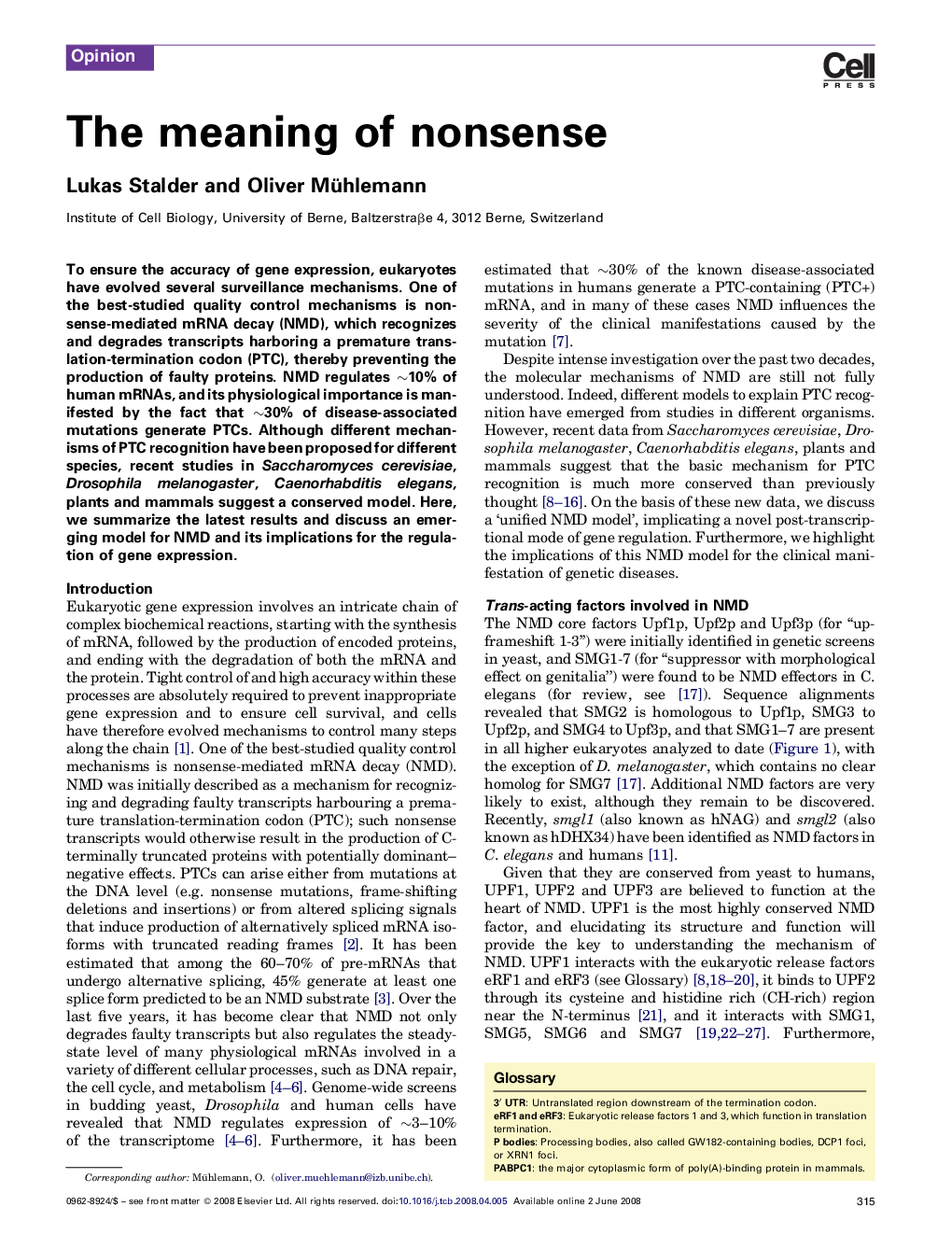| Article ID | Journal | Published Year | Pages | File Type |
|---|---|---|---|---|
| 2205193 | Trends in Cell Biology | 2008 | 7 Pages |
To ensure the accuracy of gene expression, eukaryotes have evolved several surveillance mechanisms. One of the best-studied quality control mechanisms is nonsense-mediated mRNA decay (NMD), which recognizes and degrades transcripts harboring a premature translation-termination codon (PTC), thereby preventing the production of faulty proteins. NMD regulates ∼10% of human mRNAs, and its physiological importance is manifested by the fact that ∼30% of disease-associated mutations generate PTCs. Although different mechanisms of PTC recognition have been proposed for different species, recent studies in Saccharomyces cerevisiae, Drosophila melanogaster, Caenorhabditis elegans, plants and mammals suggest a conserved model. Here, we summarize the latest results and discuss an emerging model for NMD and its implications for the regulation of gene expression.
